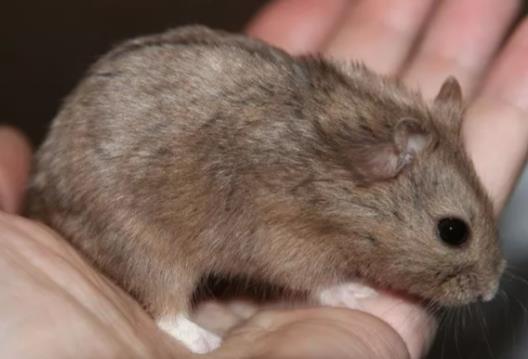Hamsters vary significantly in size by breed, but they are generally classified as small rodents. Below is a breakdown of the size characteristics and comparisons of major hamster breeds:

1. Size Ranges of Common Hamster Breeds
Syrian Hamster (Golden Hamster)
Size: Body length of 12–18 cm (including a 1–2 cm tail), with a weight of approximately 100–200 grams.
Traits: The largest common pet hamster breed. Known for a gentle temperament, they thrive in solitary housing and are the most popular pet hamster variety.
Roborovski Hamster (Robo Hamster)
Size: Body length of only 4–5 cm, weighing around 20–30 grams.
Traits: The smallest hamster breed. They are highly agile and lively but tend to be shy, making them better suited for experienced owners.
Campbell’s Dwarf Hamster
Size: Body length of 7–10 cm, with a weight of 30–50 grams.
Traits: Medium-sized with a relatively feisty personality. They require solitary housing and come in a variety of coat colors.
Winter White Dwarf Hamster (Djungarian Hamster)
Size: Similar to Campbell’s Dwarf Hamsters, with a body length of 8–10 cm and a weight of 35–50 grams.
Traits: Gentle in nature, with a gray-dominant coat marked by the characteristic “three-line” stripe along the back.
Chinese Hamster
Size: Body length of 8–10 cm, weighing about 30–45 grams.
Traits: Slender build with a longer tail (1–2 cm) compared to other breeds. They have a more independent temperament.
2. Factors Influencing Size Differences
Breed Genetics: Genetic traits determine the maximum size potential of each breed—for example, Syrian Hamsters are naturally larger due to their genetic makeup.
Age and Gender: Adult hamsters reach a stable size. Females may be slightly larger than males, especially during breeding seasons.
Diet and Health: Overfeeding can lead to obesity, while malnutrition may stunt growth. However, under normal feeding conditions, genetics are the primary factor controlling size.
Living Space: A cramped cage may limit activity but does not directly alter the hamster’s skeletal structure or natural size potential.
3. Size-Related Care Recommendations
Cage Selection
Syrian Hamsters require a cage at least 40 cm in length. Roborovski Hamsters can use slightly smaller cages but need additional enrichment like exercise wheels and tunnels.
Interaction Methods
Smaller breeds (e.g., Roborovskis) require gentle handling to avoid startling them. Larger breeds (e.g., Syrians) can tolerate more frequent interaction.
Health Monitoring
Sudden weight gain or loss may indicate illness. Regular weight checks and observation of activity levels are essential for early health detection.
4. Fun Size Comparisons
A Syrian Hamster is roughly the size of an adult human’s palm, while a Roborovski Hamster is about the length of a human thumb.
Compared to other members of the Cricetidae family (such as guinea pigs and gerbils), hamsters are only 1/5 to 1/10 their size.
Summary
Hamster sizes range from the 4 cm Roborovski Hamster to the 18 cm Syrian Hamster. When choosing a breed, consider factors like available living space, desired interaction level, and the hamster’s temperament. Despite their small size, proper care allows hamsters to exhibit their lively and endearing natural behaviors.
